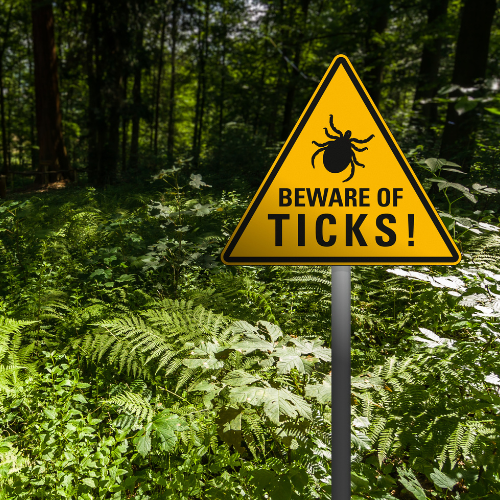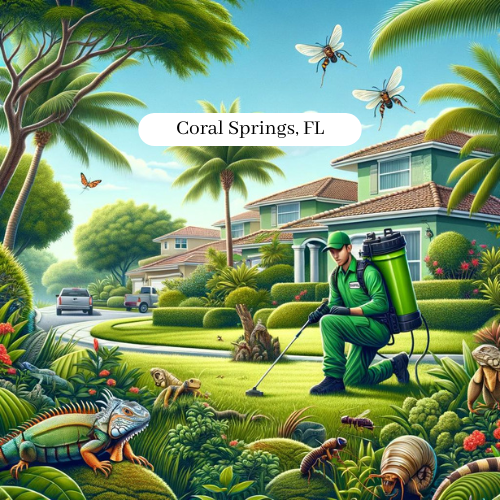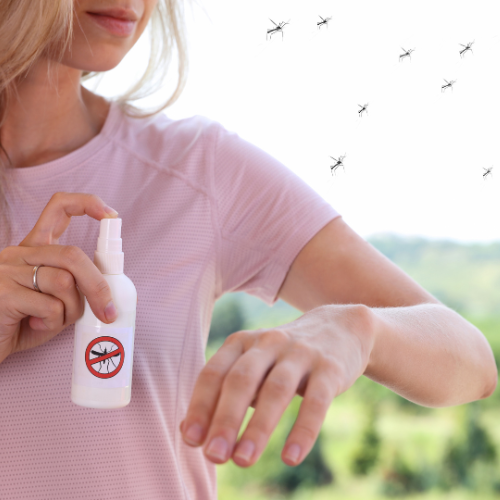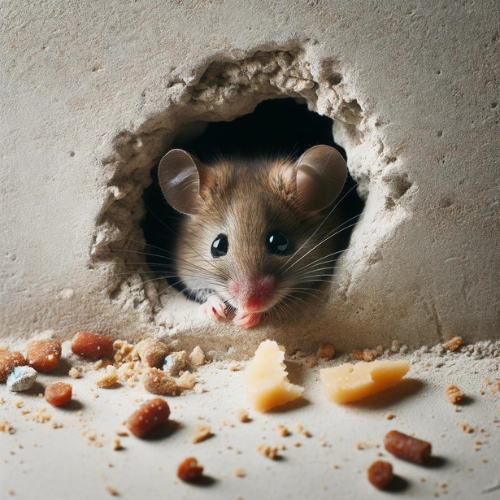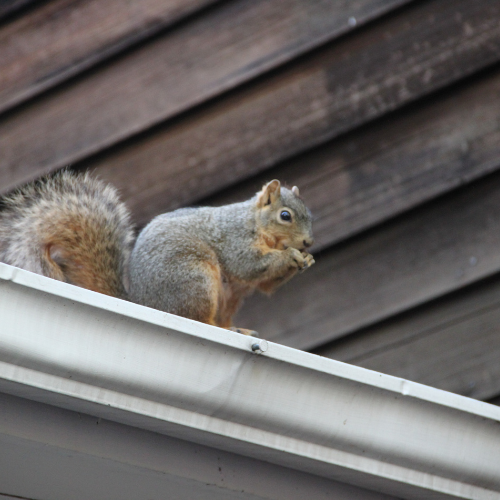
Bee Removal
Florida is home to approximately 315 native bee species, with 29 exclusive to the state. This diverse bee population includes honeybees and non-native species like Africanized honey bees. Regardless of their origin, honeybees share common characteristics:
Honeybees play a vital role as pollinators, benefiting farmers and ecosystems by facilitating plant reproduction. They are also renowned for their honey production. Honeybees are known for their defensive behavior when it comes to safeguarding their hives and territories.
Bee Removal: Our specialized bee removal services are designed to safely and effectively relocate bee colonies from your property. We prioritize the well-being of the bees and the environment while ensuring your safety.
Organic Solutions: We use organic and non-toxic methods for bee removal and relocation. Our approach minimizes harm to the bees and prevents exposure to harmful chemicals.
Preventive Measures: In addition to bee removal, we offer preventive solutions to deter bees from nesting on your property in the future. Our services include sealing potential entry points, removing attractants, and providing advice on maintaining a bee-friendly environment.
Step-by-Step Process
1. Initial Consultation: Our process begins with a detailed consultation to understand your concerns and assess the bee situation on your property.
2. Inspection: Our trained technicians conduct a thorough inspection to locate the bee colony, identify the species, and evaluate the extent of the infestation. We pay special attention to areas where bees are likely to nest, such as wall cavities, roof eaves, and tree hollows.
3. Identification: Accurate identification of the bee species is crucial for determining the most appropriate removal and relocation strategy. We tailor our approach based on the specific type of bees present.
4. Customized Removal Plan: Based on our findings, we develop a customized removal plan that prioritizes the safety of the bees and the environment. Our organic methods ensure a humane and effective relocation of the colony.
5. Removal and Relocation: Our technicians carefully remove the bee colony using specialized equipment and techniques. We relocate the bees to a suitable habitat where they can continue to thrive and contribute to the ecosystem.
6. Follow-Up and Monitoring: After the removal, we schedule follow-up visits to monitor the area and ensure that the bees have not returned. We make any necessary adjustments to the removal plan to prevent future infestations.
7. Prevention and Education: We provide expert advice and recommendations on how to maintain a bee-free environment. This includes tips on regular property inspections, reducing attractants, and promoting bee-friendly practices.
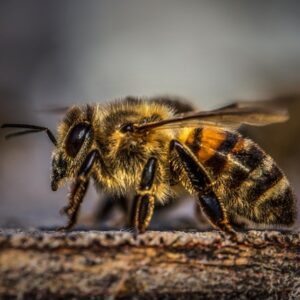

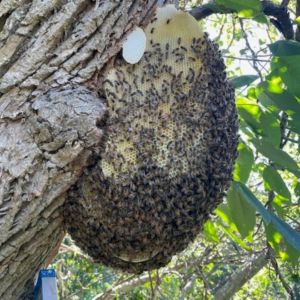
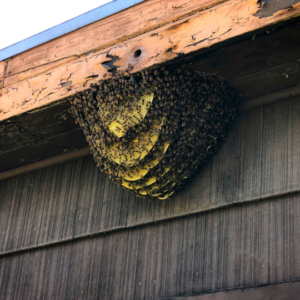
Wasp Nest Removal
In Florida, two primary wasp species are encountered: paper wasps and cicada killer wasps. Paper wasps typically live in large colonies, while cicada killer wasps prefer solitude. Distinguishing between these species can be challenging, as both can sting and cause confusion about the nature of the pest infestation.
While wasp stings are generally mild, they can be a significant concern for those with allergies to their venom. Wasps often nest in gutters, eaves, and soffits and are attracted to unsealed trash cans, flowers, and other pests they can prey on, such as spiders and various insects.
If you’re dealing with a wasp infestation, don’t hesitate to contact Pest Busterzz for professional wasp exterminator services.
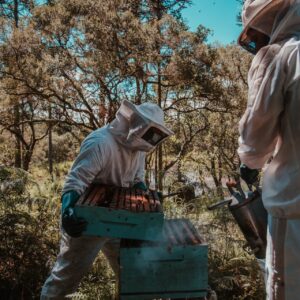
Honey bees, scientifically known as Apis mellifera, are social insects belonging to the family Apidae. They play a vital role in pollination and honey production, making them important contributors to ecosystems and agriculture. Here are some key details about honey bee biology:Anatomy:
Body Structure: Honey bees have three main body parts: head, thorax, and abdomen. They have a pair of compound eyes, three simple eyes (ocelli), two pairs of wings, and six legs.
Size: Worker bees are generally about 12-15 mm long, while queens are larger, measuring around 16-20 mm. Drones (males) are the largest, reaching up to 17-18 mm.
Sting: Female honey bees (queens and workers) possess a stinger, which is used as a defense mechanism. When a honey bee stings, it typically leaves behind its stinger along with part of its abdomen, resulting in its death.
Queens: Each honey bee colony has one queen responsible for laying eggs. Queens are larger and have a longer abdomen compared to workers. They mate with drones and can lay up to 2,000 eggs per day.
Workers: Workers are sterile females that perform various tasks in the colony, including foraging, nursing larvae, building comb, and defending the hive. They constitute the majority of the colony and undergo different stages of development.
Drones: Drones are male honey bees. Their primary purpose is to mate with queens from other colonies. Drones do not possess a stinger and have larger eyes to aid in locating queens during mating flights.
Egg Stage: A queen lays eggs individually in the hexagonal cells of the comb. The eggs hatch within three days.
Larval Stage: The larvae are fed a mixture of pollen and nectar called “bee bread” by worker bees. They molt several times, growing larger with each instar.
Pupal Stage: The larvae spin a silk cocoon around themselves and pupate within it. During this stage, the body undergoes significant transformations.
Adult Stage: After completing the pupal stage, an adult bee emerges from the cocoon. Worker bees typically live for a few weeks, while queens can live several years. Drones generally live for a few months.
Pheromones: Honey bees communicate through chemical signals called pheromones. For example, the queen releases a pheromone to maintain colony cohesion, and workers use pheromones to communicate information about food sources.
Waggle Dance: Worker bees perform a waggle dance to communicate the direction and distance to a food source. This dance conveys information about the location of nectar, pollen, or water.
Foraging: Worker bees collect nectar, pollen, propolis (plant resin), and water. They store nectar in the hive, where it is converted into honey for food.
Pollination: Honey bees are essential pollinators for many flowering plants, contributing to plant reproduction and fruit production.
Thermoregulation: Bees regulate the temperature inside the hive by fanning their wings to cool it down or clustering together to generate heat in cold weather.
Colony: Honey bees live in large colonies comprising thousands of individuals. The colony is organized hierarchically, with the queen as the reproductive leader and workers performing various tasks.
Division of Labor: Workers progress through different tasks as they age, including nursing, cleaning, building comb, guarding the hive, and foraging.
Pesticides: Exposure to pesticides can harm honey bees, affecting their behavior, navigation, and overall health.
Parasites and Diseases: Honey bees face various pests and diseases, including varroa mites, Nosema fungus, American foulbrood, and European foulbrood.
Habitat Loss: Loss of natural habitats reduces foraging resources for honey bees and other pollinators.
Understanding honey bee biology is crucial for their conservation and management, as well as for sustainable agricultural practices.
There are several natural substances that can act as repellents for bees. It’s important to note that bees play a vital role in pollination and ecosystem health, so it is generally recommended to avoid using repellents that may harm them.
However, if you are looking for ways to deter bees from specific areas for safety reasons (e.g., allergic reactions), you can consider the following natural repellents:
1. Citronella: Citronella oil is commonly used as an insect repellent and can help deter bees. It has a strong scent that bees may find unpleasant.
2. Peppermint: The strong aroma of peppermint oil can be effective in repelling bees. It is recommended to dilute the oil and spray it in areas where you want to keep bees away.
3. Cinnamon: Cinnamon has a strong scent that can discourage bees. Sprinkle powdered cinnamon or place cinnamon sticks near the areas you want to keep bees away from.
4. Garlic: The strong smell of garlic can help deter bees. You can crush garlic cloves and place them in bowls or hang garlic bundles near the desired bee-free zone.
5. Eucalyptus: Eucalyptus oil has a potent fragrance that bees may find unpleasant. Dilute eucalyptus oil with water and spray it in areas where you want to repel bees.
6. Lemongrass: Lemongrass essential oil has a citrusy scent that can be effective in keeping bees away. Dilute it with water and use it as a spray in bee-prone areas.
It’s important to remember that while these natural repellents may deter bees, they can also affect other beneficial insects and pollinators. It is advisable to use these repellents sparingly and only when absolutely necessary. Additionally, planting bee-friendly flowers away from areas where you want to discourage bees can help divert their attention and provide them with an alternative food source.


